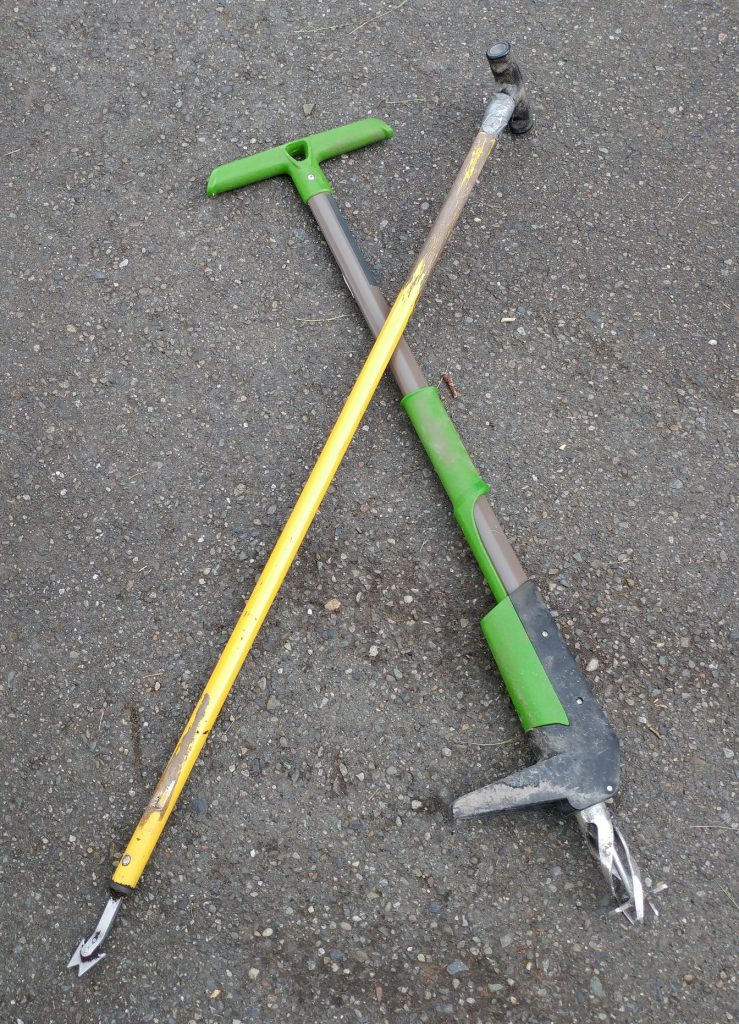
Nearly every afternoon for the last two months, curious drivers have noticed two people meandering through a pasture, following a narrow pathway formed by two lengths of string tied to fenceposts. It’s us! Thanks to COVID 19, we are no longer able to go the gym for a workout so like many other gardeners we have put that unexpended energy into our gardens and landscapes. And in this case, cattle pasture.

The lettuce from hell
My family has raised free-range, grass-fed beef cattle for over 50 years, and with our move to the family farm in 2017 we now oversee much of that business concern. Managing pasture weeds is just one of the battles associated with providing quality browse for the cattle. Inedible plants like bull thistles (Cirsium vulgare) and tansy ragwort (Senecio jacobaea) are taprooted species, easily removed with a single weeding. But not Canada thistle (Cirsium arvense), colorfully and accurately described as the “lettuce from hell” thistle. Though it’s highly nutritious, the prickles are so unpleasant to sensitive muzzles that cattle avoid it.
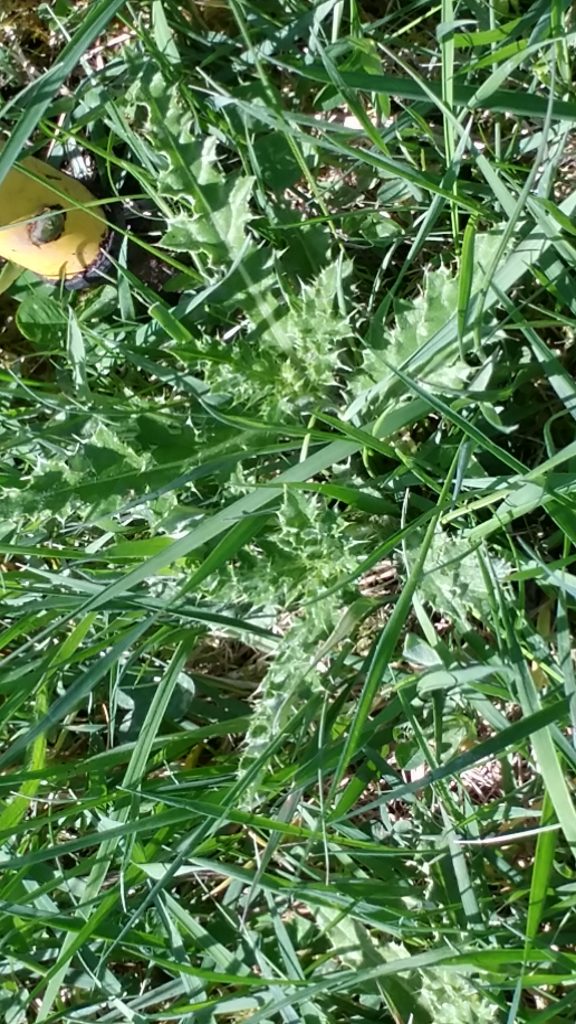
Here are two small specimen lurking in the grass 
Last year’s stems are still attached to the active root system, which has already generated two new plantlets
This aggressive, herbaceous perennial (native to Eurasia, not Canada!) has an extensive underground root system, consisting of thick, propagative roots which give rise to more roots (which grow vertically and horizontally), and shoots which pop up seemingly everywhere. They do NOT have rhizomes, and they do NOT have stolons. Apparently, Canada thistle has a unique, hellish morphology allowing it to spread rapidly – 6 meters per year in the U.S. – if not managed (you can read more about this topic here).
Applying plant physiology in the field – literally
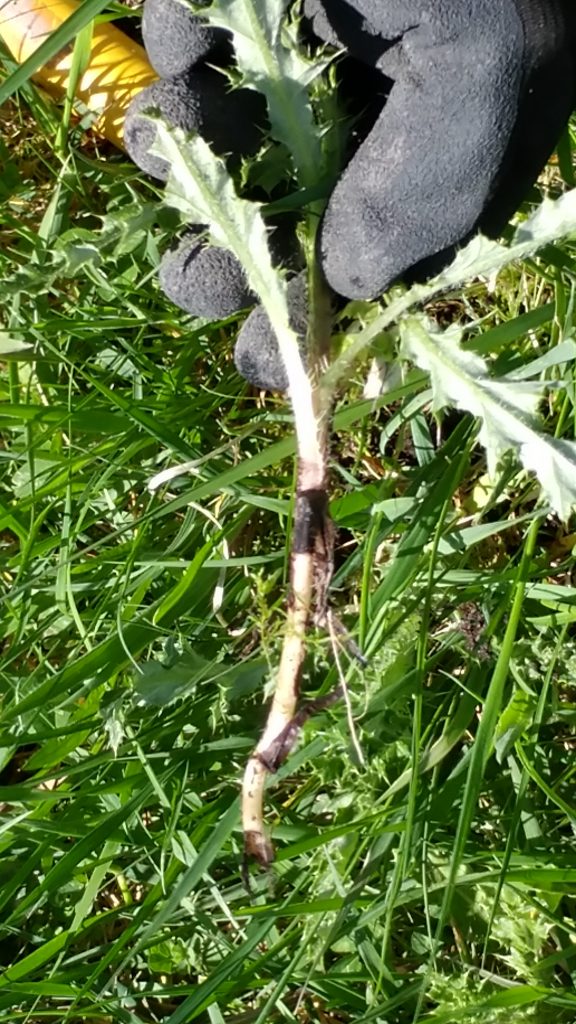
The area be;pw the black collar is all underground stem 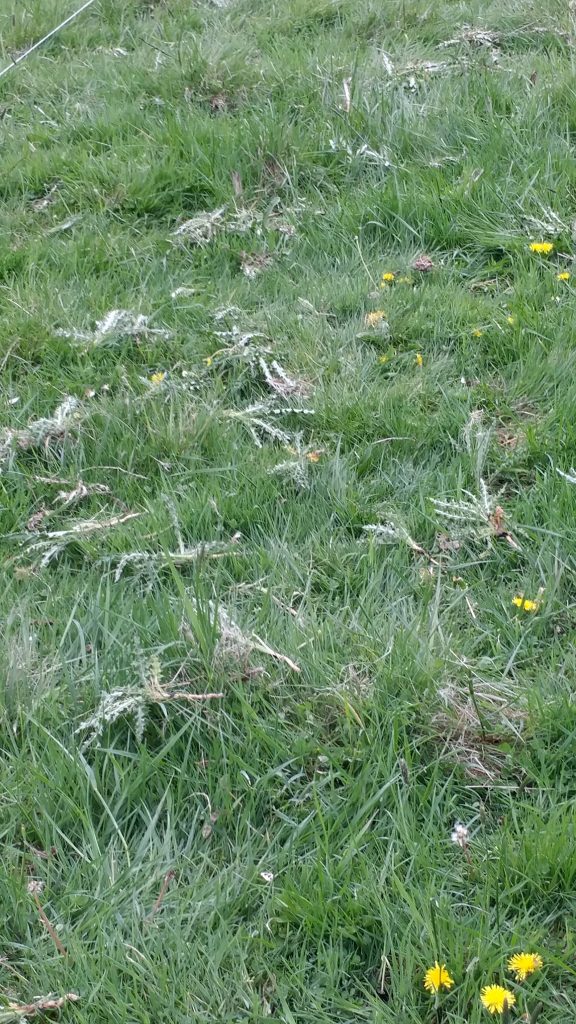
Leaving the bodies strewn behind me. Exposed stems mean these will die quickly.
But there is a weakness in this aggressive root system – and that weakness is the need for resources provided by the aboveground thistles. The perennial root system stores resources over the winter, then pumps them into new shoots in the spring. This is the chink in the armor – these shoots are USING resources, not providing them, until they slow their own expansion. So the trick is to remove the shoots as soon as they appear, forcing the roots to expend more resources to make more shoots, and so on.
So this is why we are in the field, every day, removing those shoots, systematically clearing areas and then repeating in another week or so as new stems appear. And it’s working. But here is the lesson we are learning that gardeners can apply to their own gardens and landscapes.
Dueling weeders
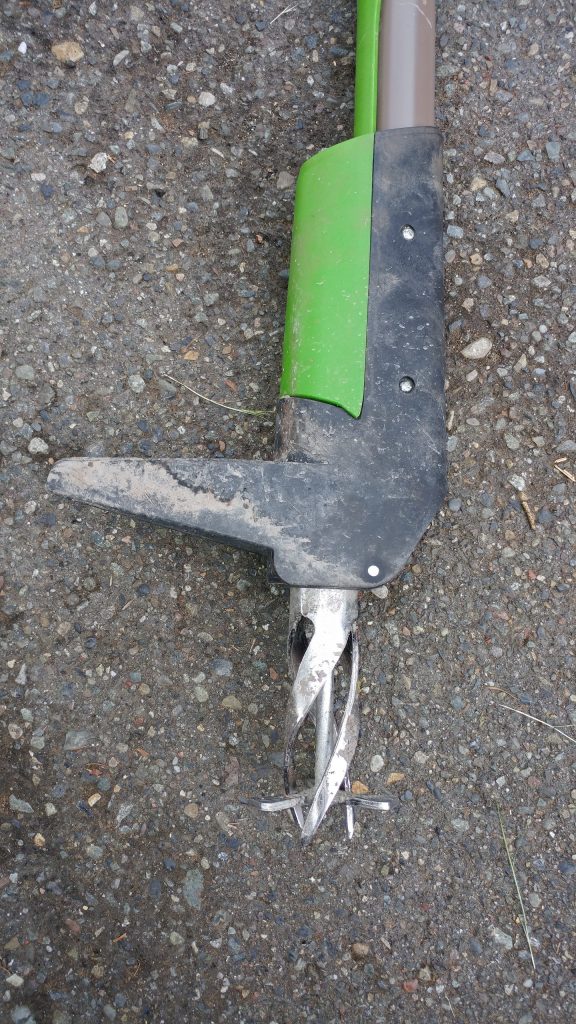
The uproot weeder removes a core of soil containing the roots 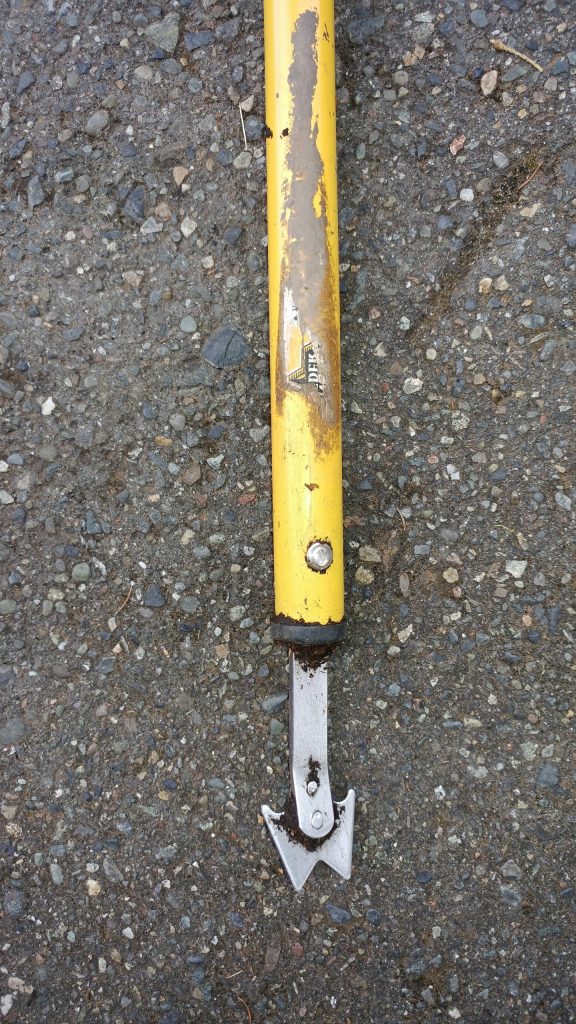
The winged weeder dislodges the weed from underground networks
We have two weeding implements: the “winged weeder” and the “uproot weeder.” The first is my choice, though it is NOT a solely a “stand up tool” for this purpose. My husband prefers the uproot weeder, which twists and pulls out a core of soil along with the root. I don’t like this latter method, as it creates a hole through which sunlight can penetrate, activating both photodormant seeds and stem regrowth. But to each their own.
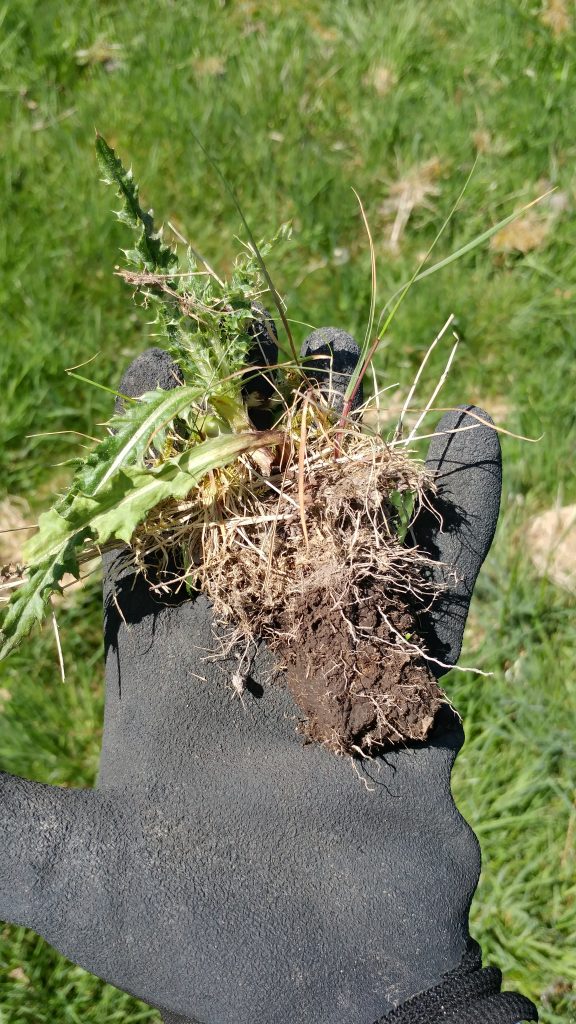
The presence of healthy leaves suggests this thistle fragment is far from dead 
This underground stem has already generated new roots and stems (bottom left) despite sitting out in the elements for several days
However, we found another reason that the coring method doesn’t work well: those cores can stay moist and guess what? The stems generate new roots, and left alone could easily re-establish if conditions were cool and moist. Just what we need.
My preferred method, using the winged weeder, is to break the underground stem off as deeply as possible and then work it out as seen int he video. For this you need protective gloves, but not thick ones. You need to be able to feel what you’ve got a hold of.
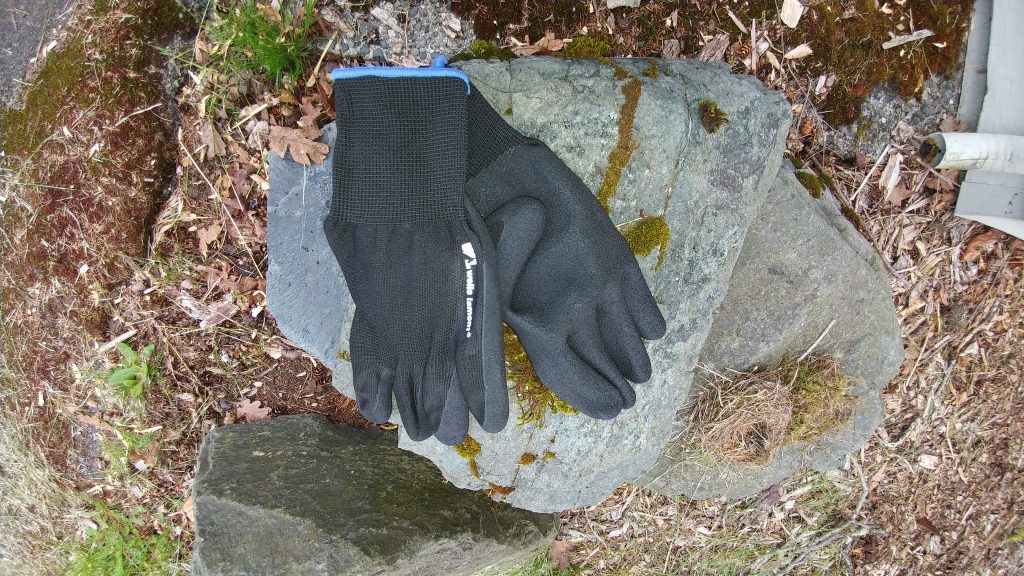
Hold onto the base of the thistle gently and as you work the weeder under it move your fingers down BELOW the crown. It feels like a tough bulge and you want to hold onto the smooth stem below it. Otherwise it is likely to break off, leaving the crown viable. You will hear, and possibly feel, a satisfying pop as you dislodge the stem from the underground system. Pull it up carefully. The remaining hole is tiny, and easily covered by pressing on it gently with one’s boot.
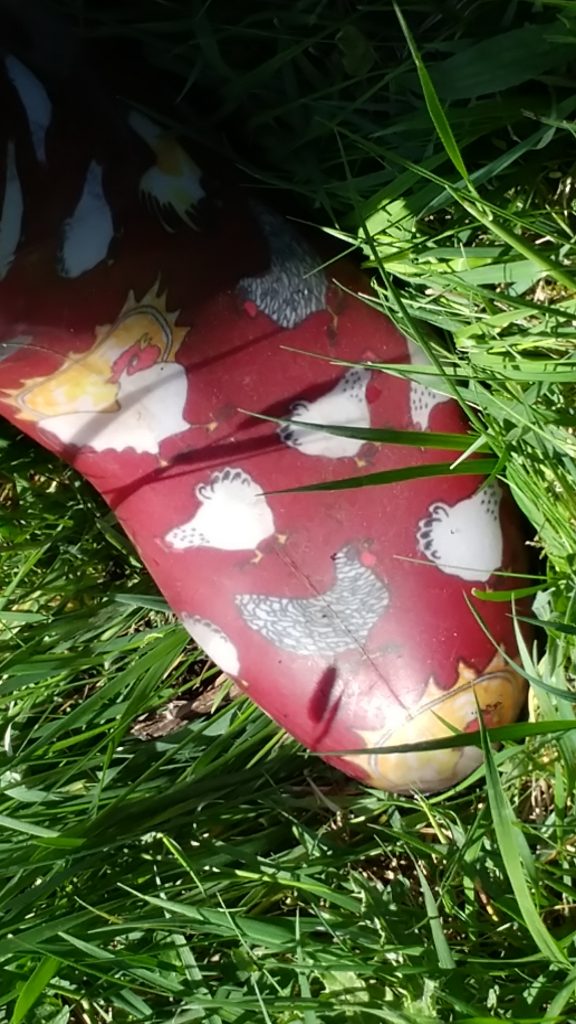
The advantages to physical removal of perennial weeds
- I’m getting out into the fresh air and have lost more weight in the last month than I lost going to the gym in the past year.
- I’m controlling a noxious weed population without the use of chemicals.
- I’m developing a technique that can be applied to ANY herbaceous perennial in ANY garden or landscape. That’s the great thing about plant physiology – the pattern of resource allocation is not species dependent. Think horsetail and bindweed, for instance.
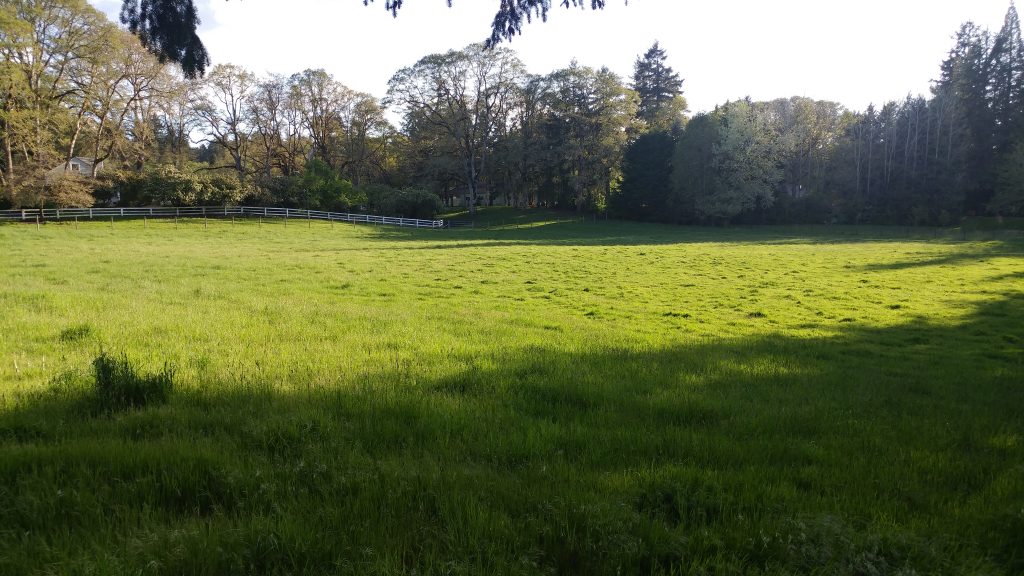
Do keep in mind that perennial weeds are perennial problems! We aren’t EVER going to have a thistle-free field, but it will become a more manageable problem as the infestation will have been dramatically reduced this year. I’ll try to do some updates over time.
“The satisfying pop” of big roots released from the earth–nice article on a salubrious and sustainable and ecologically sensible activity! The same concept applies to managing unwanted vines. Cutting encourages new growth. Better to rip the roots out; easier when the soil is moist.
Absolutely. We did this many years ago at UW with English ivy – in fact, that’s where the original information came in terms of resource allocation.
I Googled ‘Winged Weeder’ and all I found was a type of hoe. Does it have a name or brand that I can search on?
Try looking on Amazon for “weeder” and “2 prong” and “long handle” or “extended.” I can’t remember the brand but you can find them easily on Amazon (not that you have to purchase them there).
Ace Hardware has 3 or 4 weed pullers.
I’ve tracked the weeder down, but it may be discontinued: Winged Weeder Precision Dandelion Weeder WW600.
Welcome to my world, lol. Your text says “attach video link” but there is none…I do this kind of thing when I write, meaning to go back an insert the information later. When I realize how many invasive species there are where I live in relation to the native plants that I want. I am only left with what I call “subtractive gardening”. Hugs to you and glad you are doing well.
Yes, I removed my reminder. The video is actually in the photo. Good to hear from you, and stay healthy!
Is any of this applicable to horsetail? What is the best method for removal?
Yes – it has the same sort of aggressive underground root system. Pull, pull, pull and pull some more.
That’s great to know. I’d read online that it should only be snipped above the surface to avoid triggering root divisions. But I’ve found that snipping is slow and the weed just regrows quickly. I’ll switch to the more aggressive techniques you describe here.
Yes, that piece of misinformation is completely devoid of scientific merit. Reduce resources as much as you can to reduce regrowth.
Would not goats be appropriate for tender spring thistle clean up?
They eat everything. And this is our cattle pasture. We don’t need more herbivore competition!